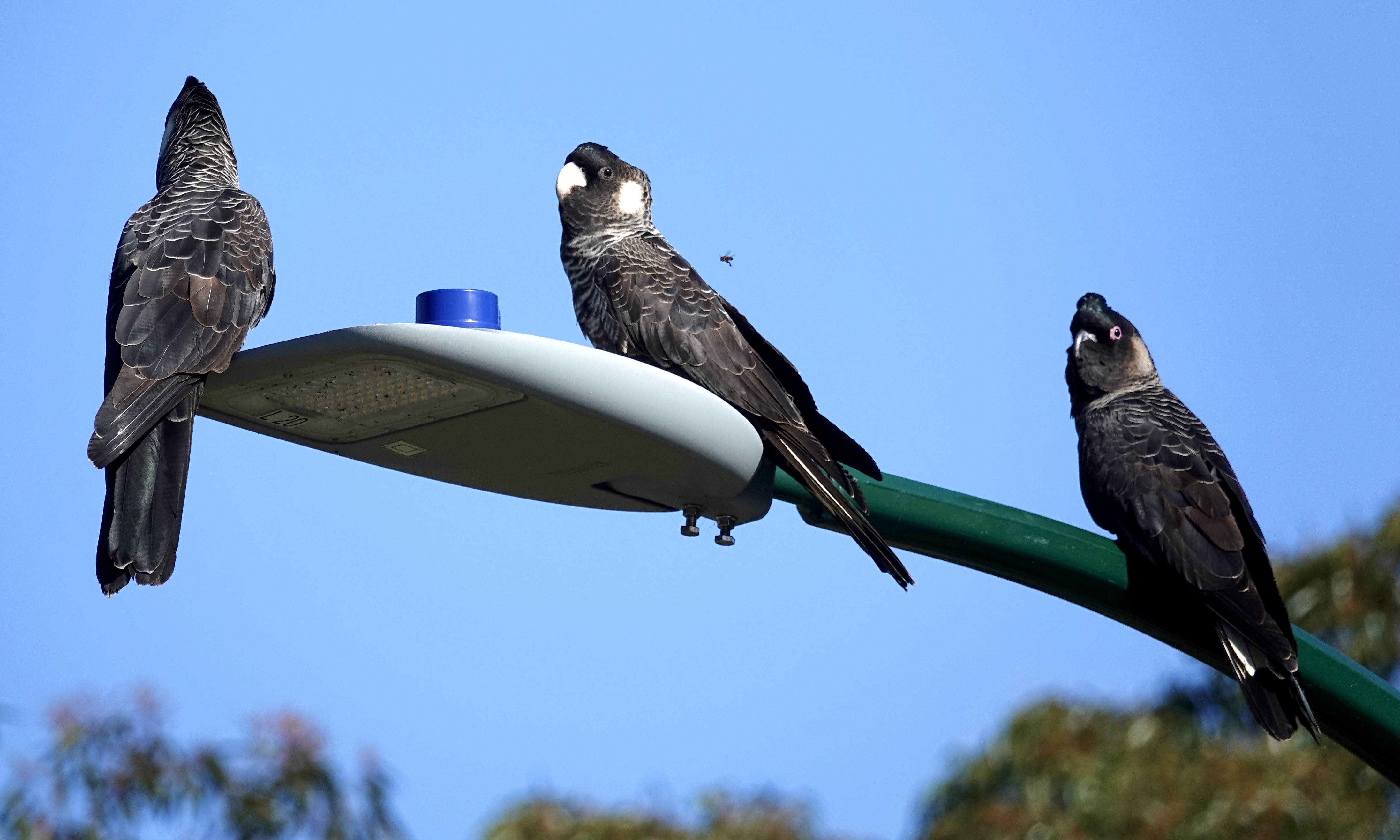Our planet has just two white-tailed black cockatoo species.
Both are endangered, and their only “home” is in southwest Western Australia.
My beloved and I live within a very few minutes flying time of the centre of this region’s one metropolis.
For some months of every year, we see and hear one of those two species almost every day – on most days, more than once.
All photos were taken in Blencowe St, West Leederville
The featured image, above, is unusual because the three largest of its four winged creatures are perched on a man-made, inanimate object.
Usually, when not flying, Carnaby’s black cockatoos – Calyptorhynchus latirostris – are much more likely to be seen on/in the trees and bushes that provide their food.
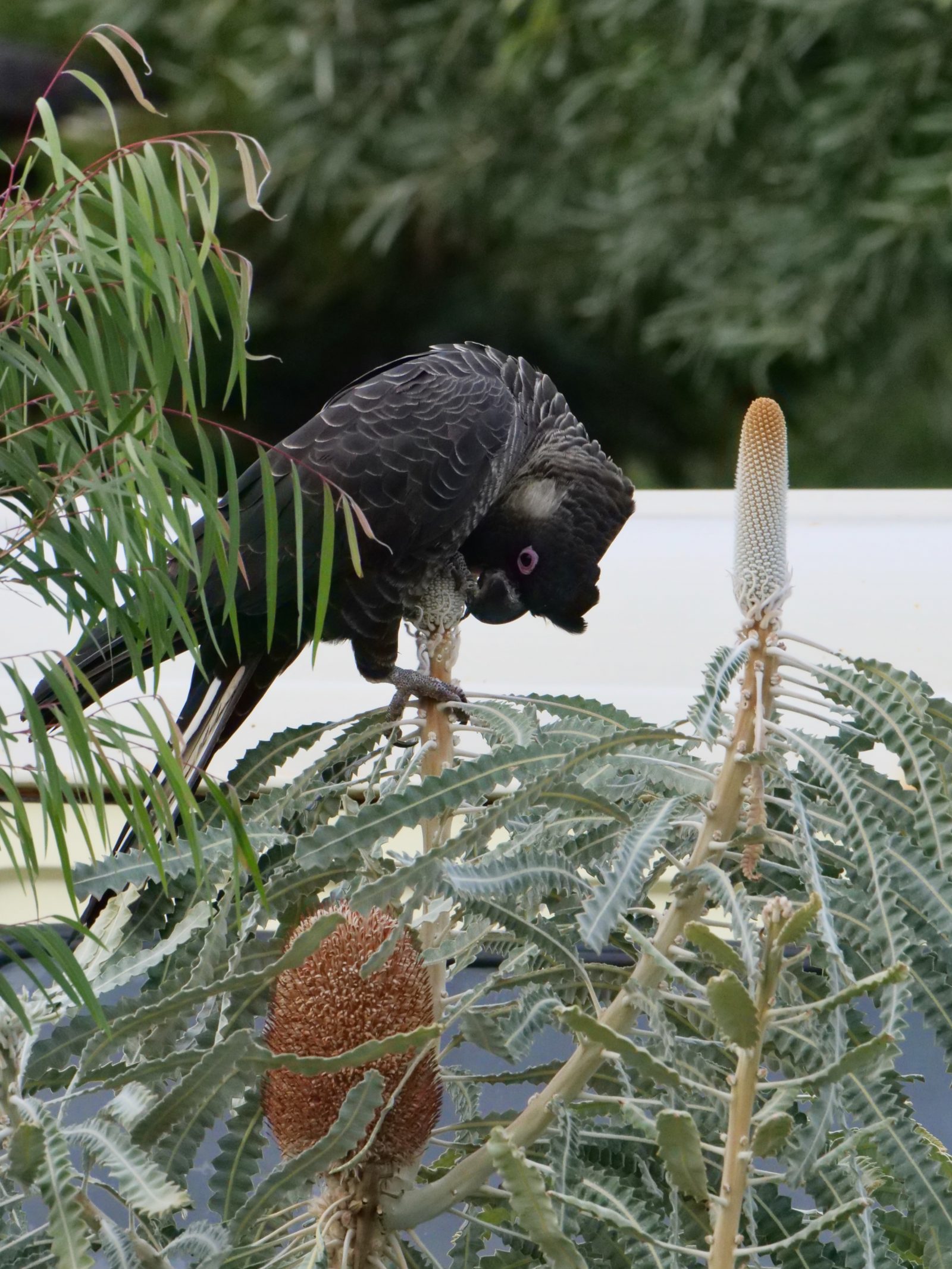
Banksia and Marri are particular favourites, but Carnabys’ diet has long included the seeds, nuts and flowers of many plants that are likewise endemic to southwest WA.
An uninformed observer could easily believe that these loud, powerful birds must be highly destructive to the trees and bushes that they so exuberantly “attack”.
In fact, the fellow-endemics are well adapted to each other.
The cockatoos’ “hard pruning” is not a threat to the plants; the Carnabys help distribute their seeds.
They also devour some of the “grubs” that do threaten the plants’ survival.
The Swan Coastal Plain has been prime Carnabys’ habitat for umpteen thousand generations.
Perth “arrived” less than two centuries ago.
The city has now “swallowed” or degraded much of the Swan Coastal Plain.
Outside Perth, farmers, loggers, miners and road builders have likewise destroyed or degraded Carnabys’ habitat.
Still, probably/arguably, it is not too late – we ought be able to “save” Carnabys…and not a few other other threatened or vulnerable WA species that are now “hanging on, barely”.
Our rare cockatoos’ high intelligence and adaptability could prove a very important part of the equation.
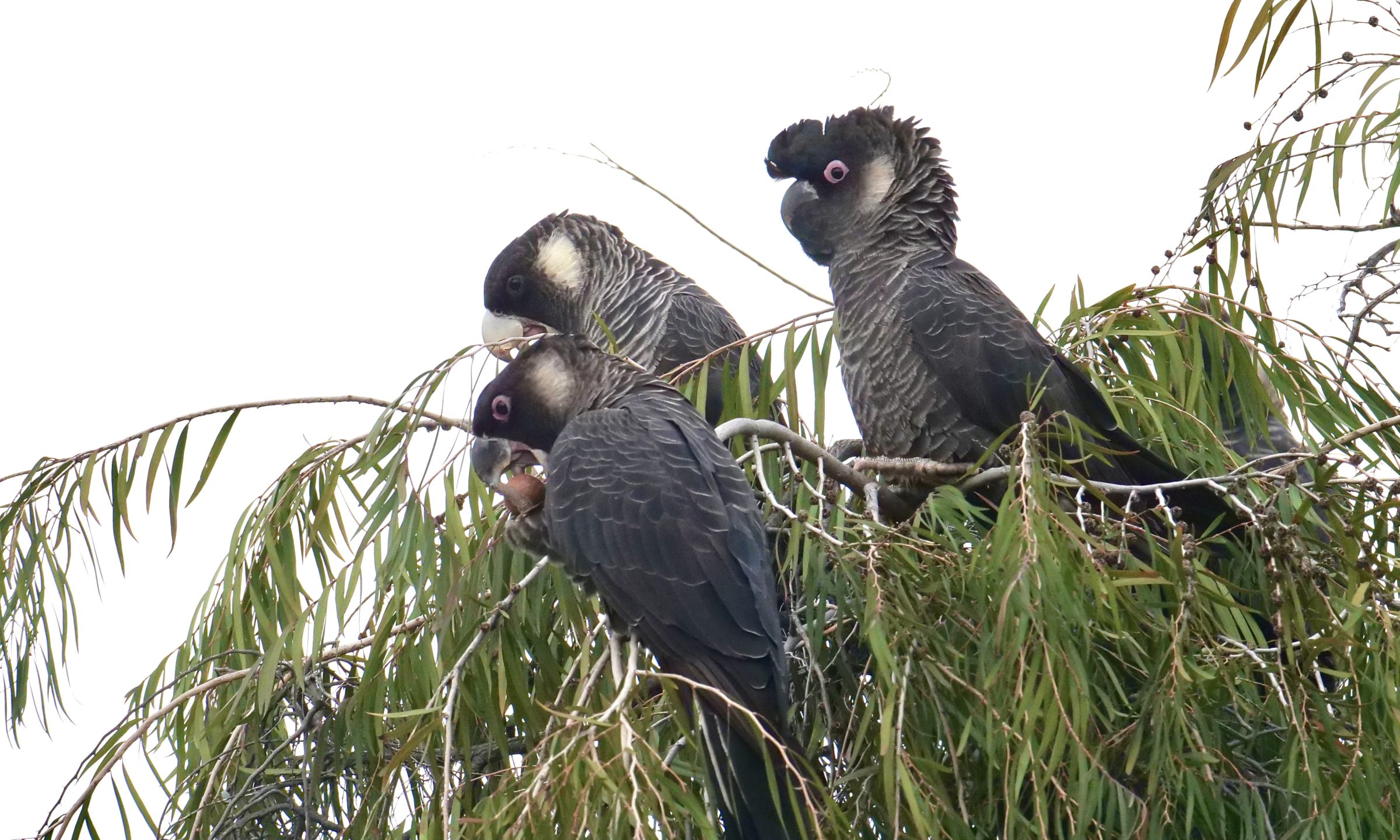
Prior to colonisation, no Pinus species grew in Australia.
Carnabys now “attack” their cones as enthusiastically as they do Banksias.
Macadamias are Australian plants, but not West Australian.
Not at all long after Macadamias “arrived” in Perth, Carnabys were “on to them”.
Ditto Pecans.
You may or may not have recognised the Macadamia nut, above…
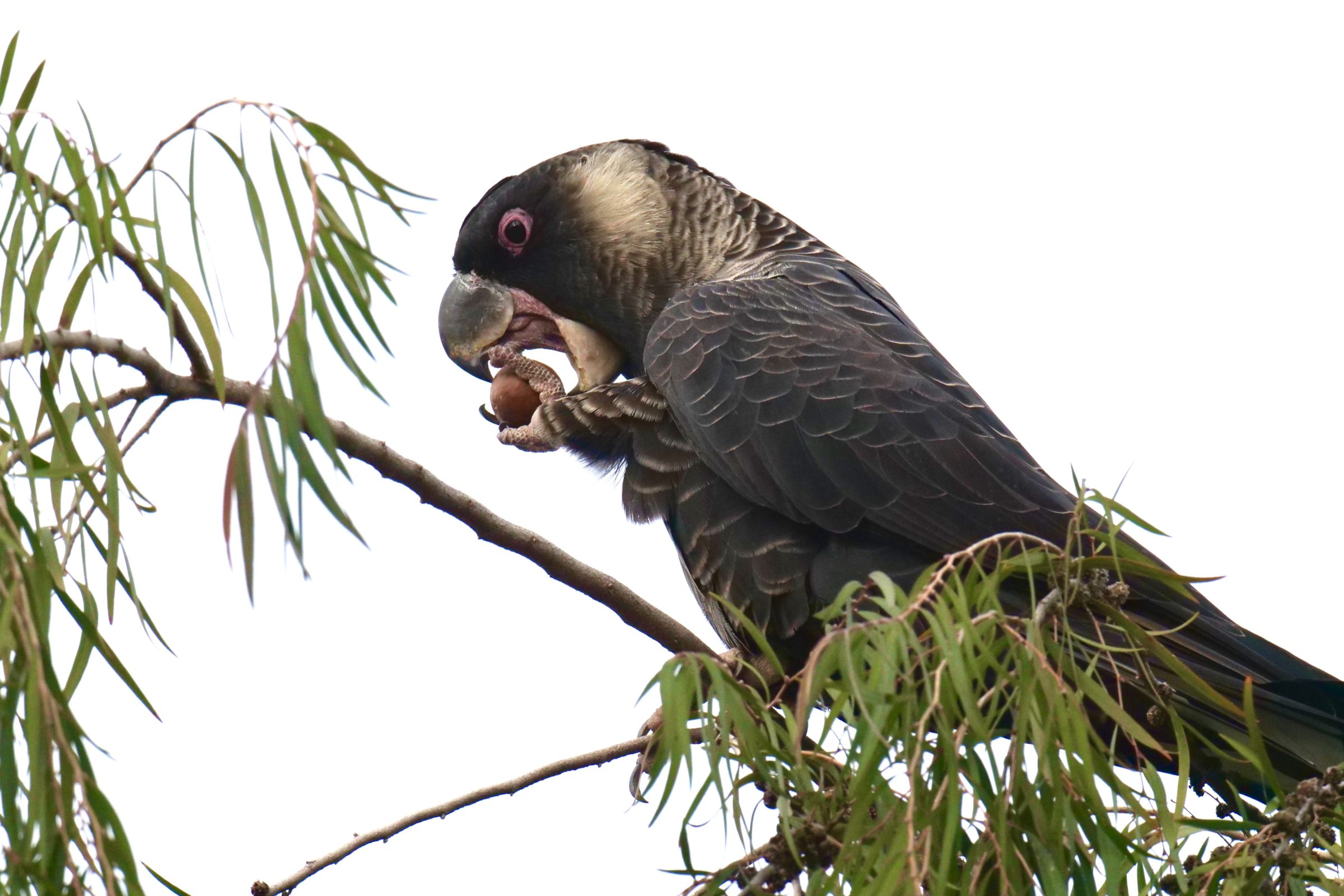
The pink ring around our hero’s eye signifies that he is a male.
He is sitting in a peppermint tree, streetside, having just “raided” the nearest backyard.
Perhaps, the owner of the relevant Macadamia tree is an “Elmer Fudd”, enraged by those “wascally pawwots”.
Maybe, that person is an active ally, who had the Carnabys in mind when s/he planted the tree.
In any event, the relevant Carnabys chose to zip in and out of the relevant backyard, singly.
Upon rejoining his or her fellows in one of the street trees, the “raider” would deal with the “prize”.
Other members of the same flock were offering another resident a reason to expedite his or her home maintenance schedule.
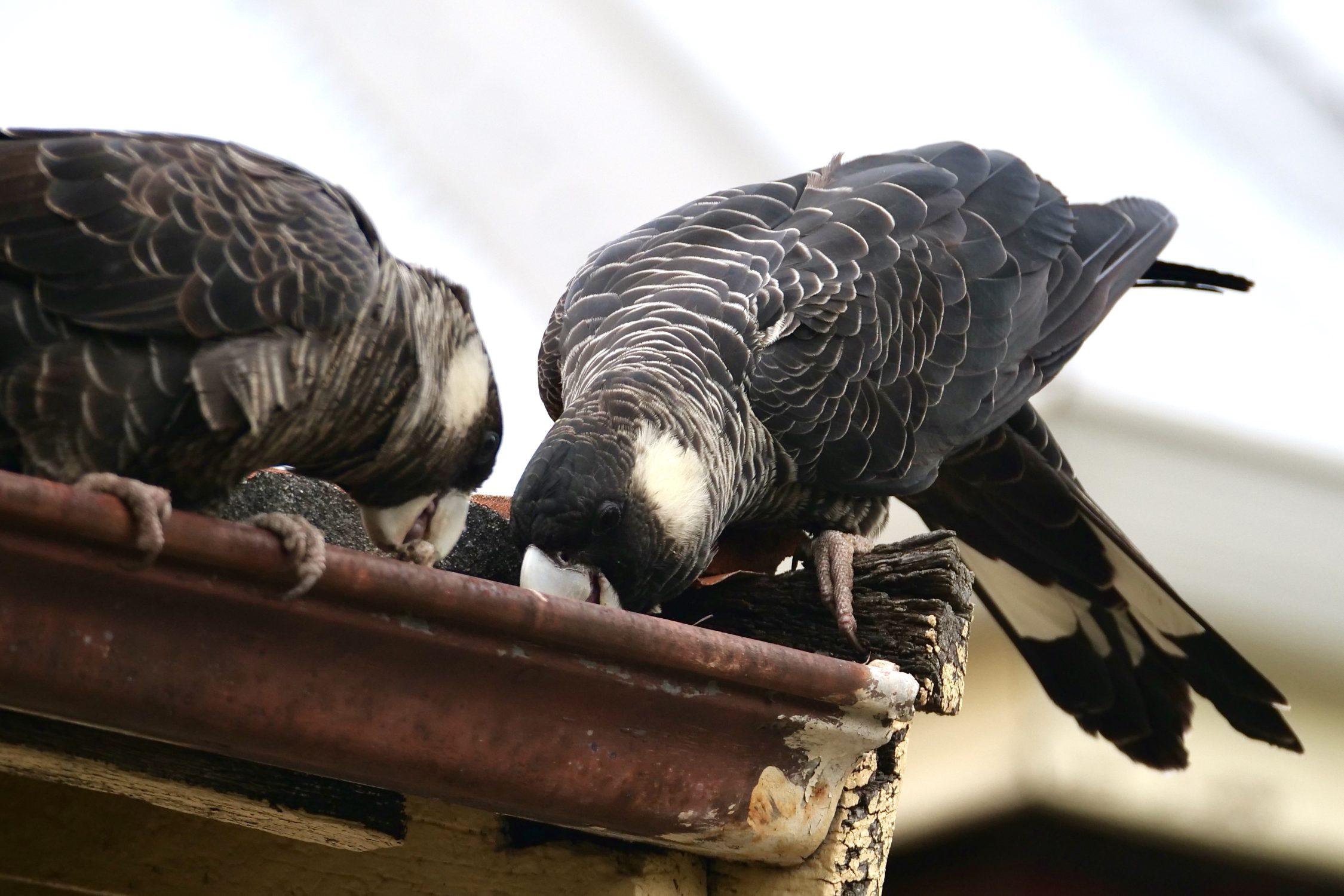
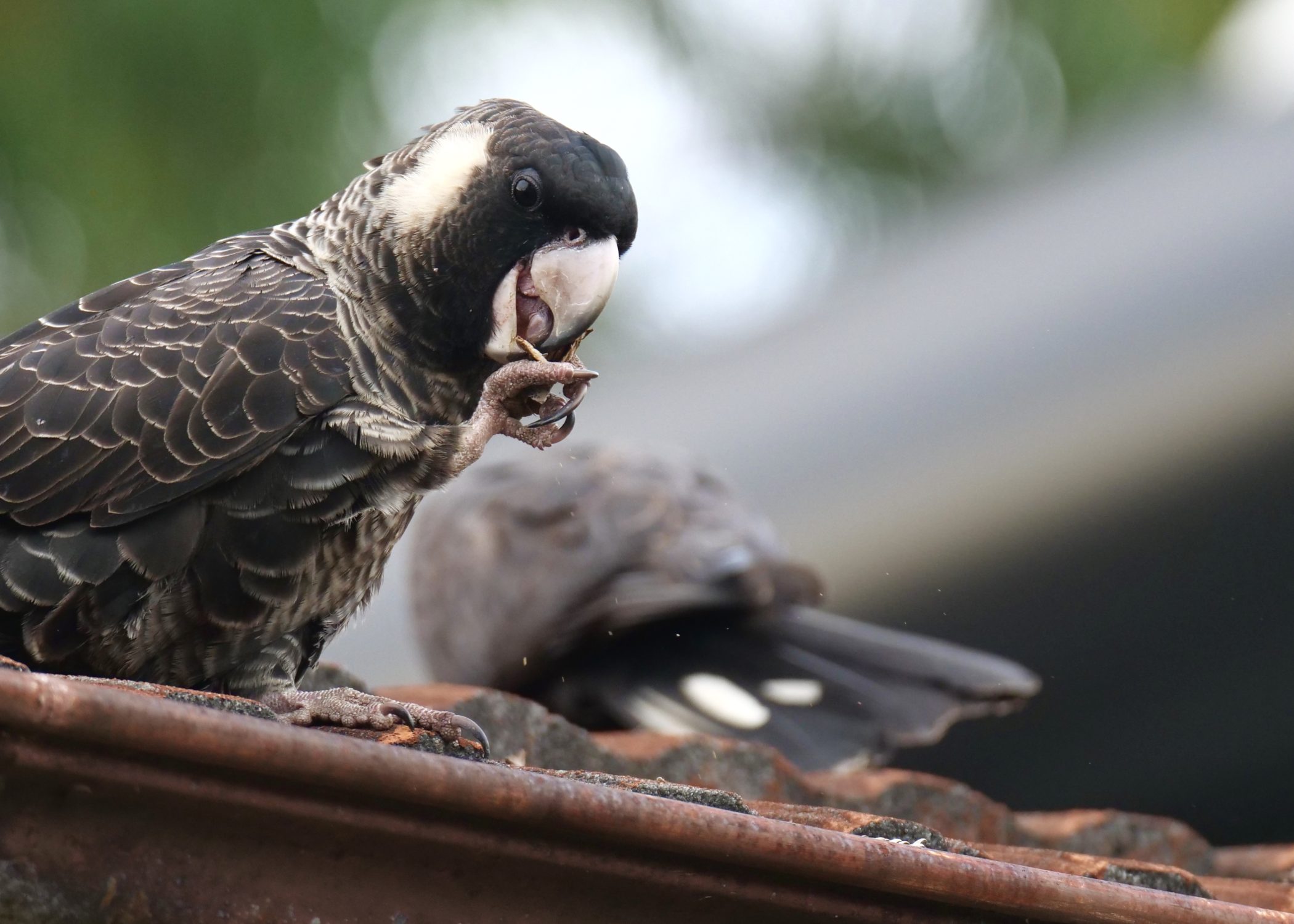
Click here for the Carnabys section of an excellent site about Southwest WA’s three different black cockatoos, and the efforts to ensure they have a future.
